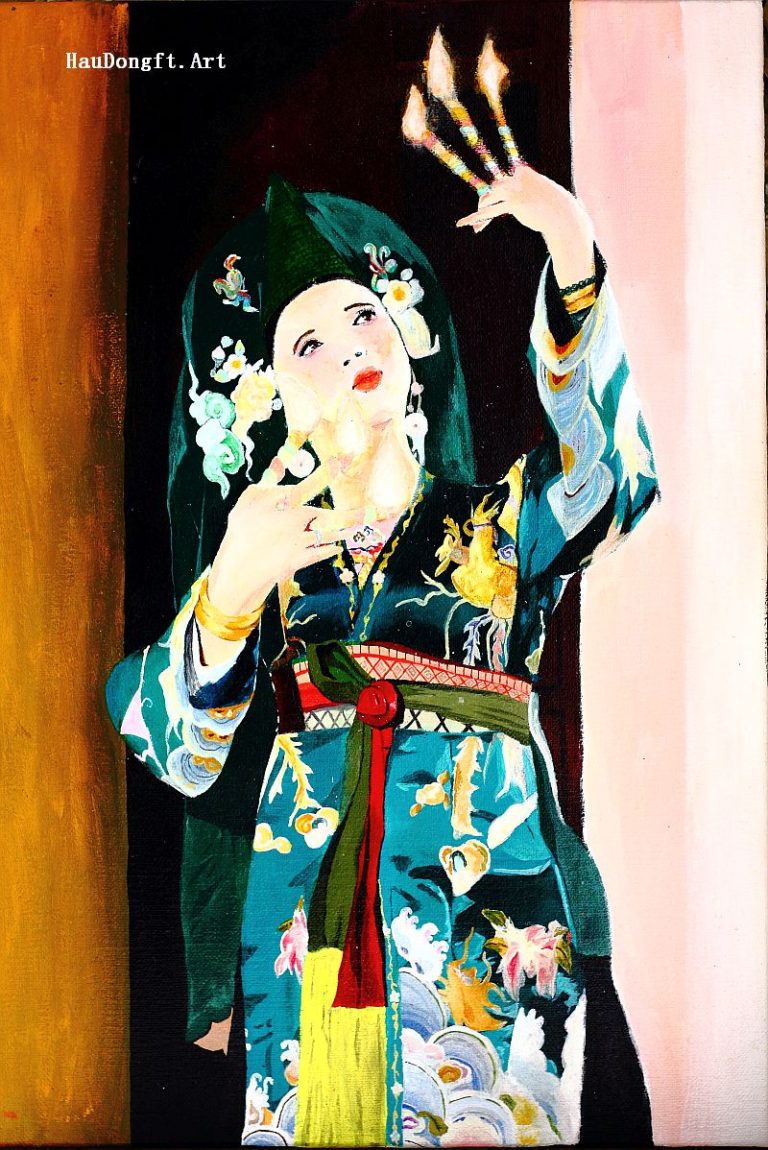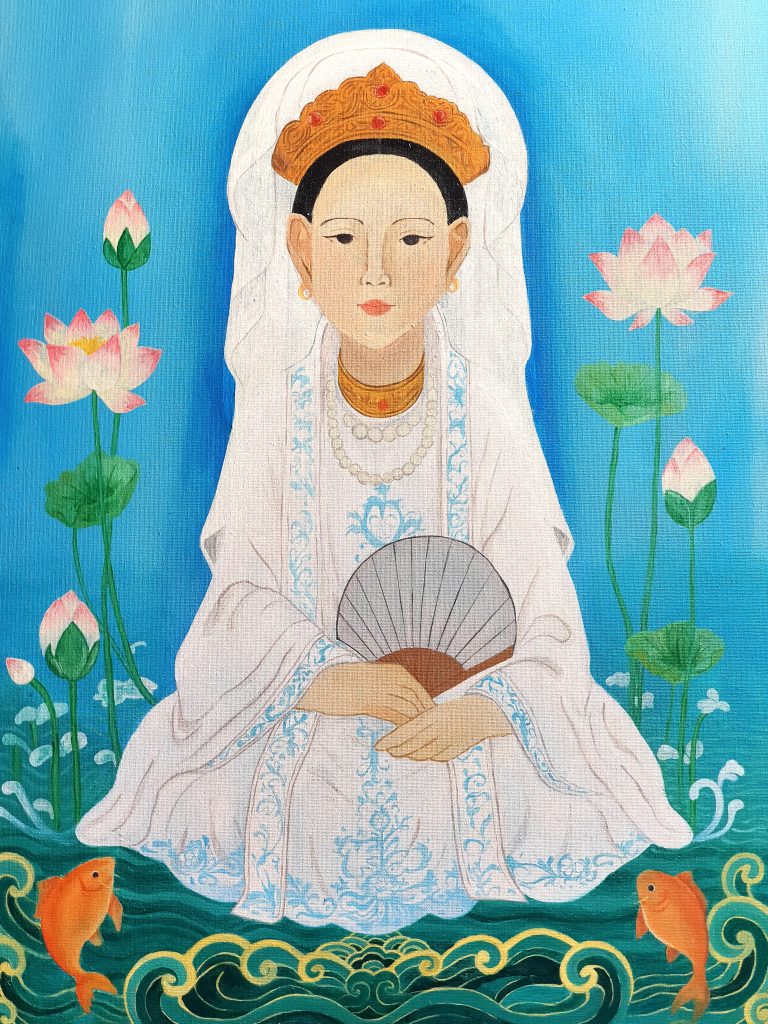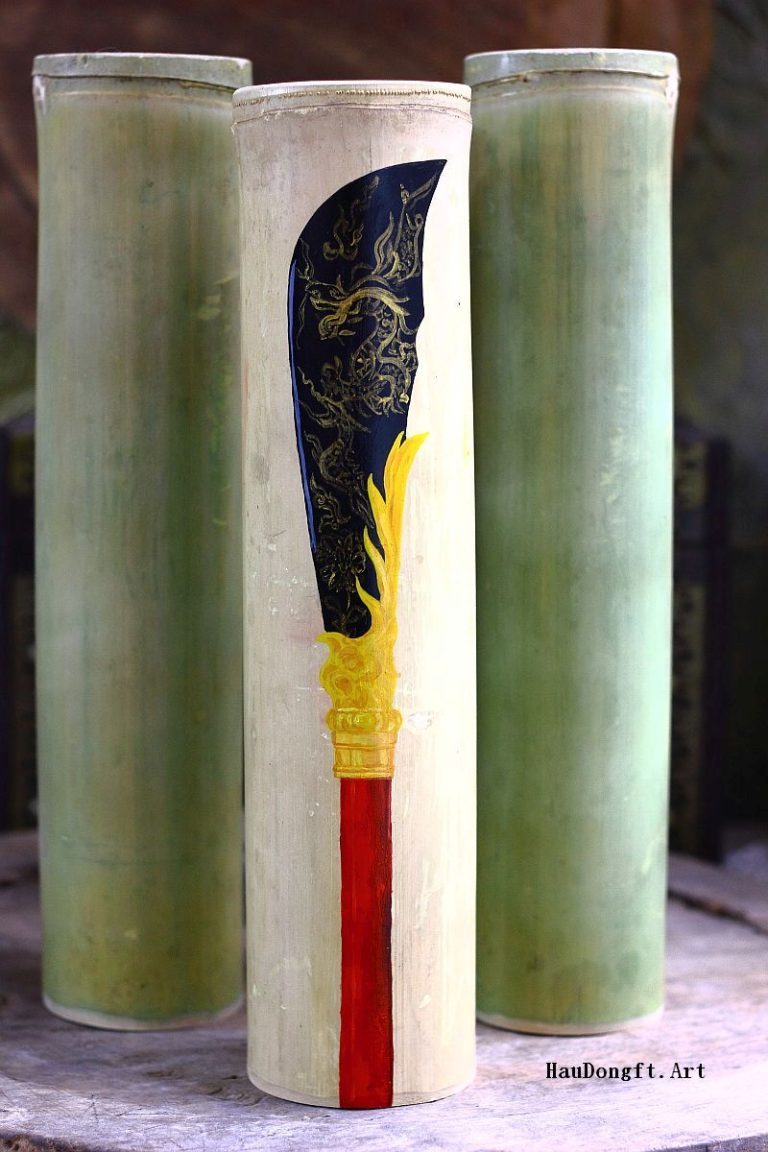
2. Content & Activities
a. Immersive Introduction Film (5–7 minutes)
b. Cross-Cultural Encounter Pathway (Field Trip Module)
Location: Vietnamese Women’s Museum, Hà Nội
Visitors walk through a curated pathway replicating the museum’s exhibition layout, featuring life-sized mannequins dressed in embroidered ritual costumes, jewelry, musical instruments, and altar reconstructions.
Audio guides offer stories of practitioners: mediums explaining how each headdress style, robe, fan, or weapon connects to specific deities and spiritual symbolism.
Subtle incense scents, chầu văn melodies, and ambient lighting evoke the ritual atmosphere, allowing visitors to experience the sensory world of hầu đồng.
c. Live Dialogue Booths – “From Hà Nội to the World”
d. Global Reflection Wall
“What emotion or symbol resonated most with you during the ritual?”
“What does the Mother Goddess tradition reveal about universal spirituality?”
REFLECTION WALL
I came here expecting to study another country’s ritual, but instead, I felt like I was meeting my own ancestors in a different language.
When the film showed the medium twirling a red scarf, I immediately thought of the kagurad ances from my hometown shrine – the way the movements summon calm and joy at once. I realized that whether we call her Amaterasu or Liễu Hạnh, the Mother Goddess carries the same grace: she dances to remind us that light can be human.
The first drumbeat of chầu văn felt strangely familiar like the atabaque drums in Candomblé rituals I grew up hearing in Bahia. Both traditions sing to call the divine through rhythm and surrender. When I joined the dialogue booth and tried tapping the wooden fish drum, a Vietnamese artist smiled and said, “It’s not just rhythm; it’s invitation.” In that moment, I understood: our gods, though oceans apart, respond to the same heartbeat.
As an art historian, I came to admire the embroidery, the silk, the precision of gesture. But after listening to the medium’s voice in the booth, something shifted. Her story of pain, loss, and transformation through ritual turned beauty into something deeper. I realized that in Đạo Mẫu, aesthetics are not decoration; they are devotion. Every shimmering thread, every movement of a fan, is an act of faith made visible. I left with the sense that art, at its purest, has always been a way to heal what cannot be spoken.
I’m not a religious person. I work in cultural diplomacy, so I often observe rituals as “heritage,” not belief. But standing before the altar reconstruction, surrounded by soft incense and that haunting voice singing chầu văn, I felt an unexpected quiet inside me. The line between performance and prayer dissolved. During the group discussion, a Vietnamese medium told me: “Spirit doesn’t need to convince you, only to meet you.”
At the world map display, I tapped my country and saw images of gnawa ceremonies, our own dances of trance and healing. It struck me that though the costumes, chants, and colors differ, the purpose is the same: to speak with what cannot be seen, to release what the heart holds too tightly. When I watched the Vietnamese medium lift her










© 2025 Hau Dong Featuring Art. All rights reserved. Contact